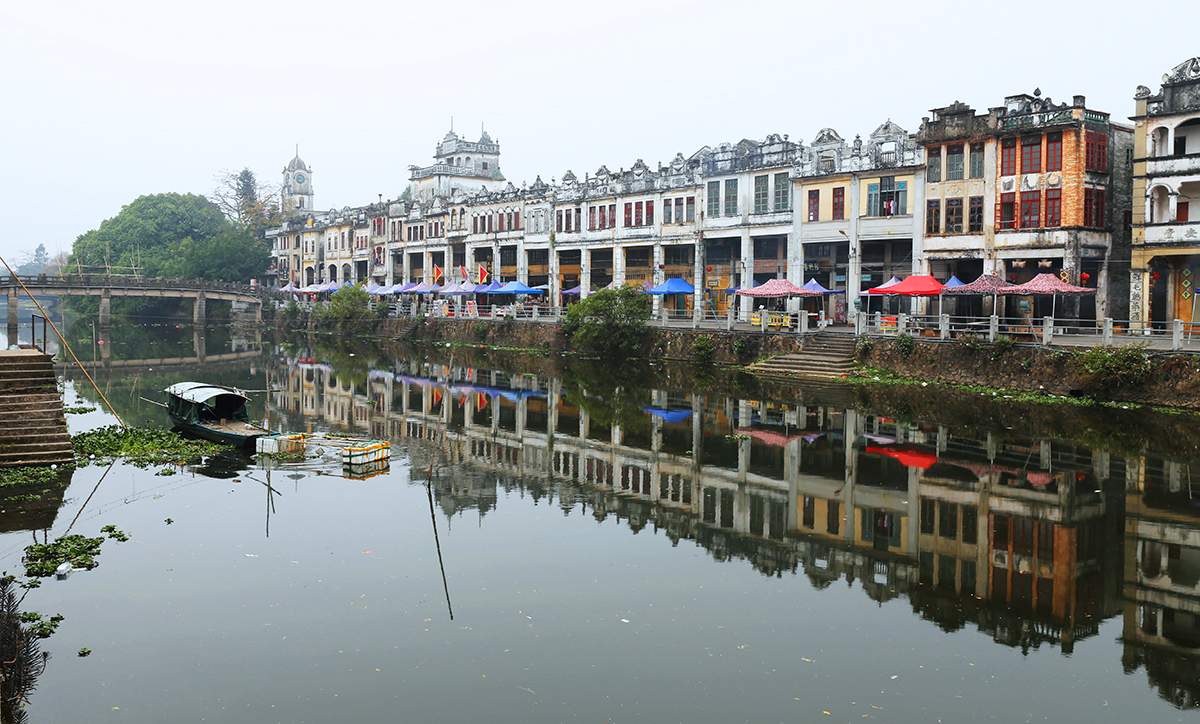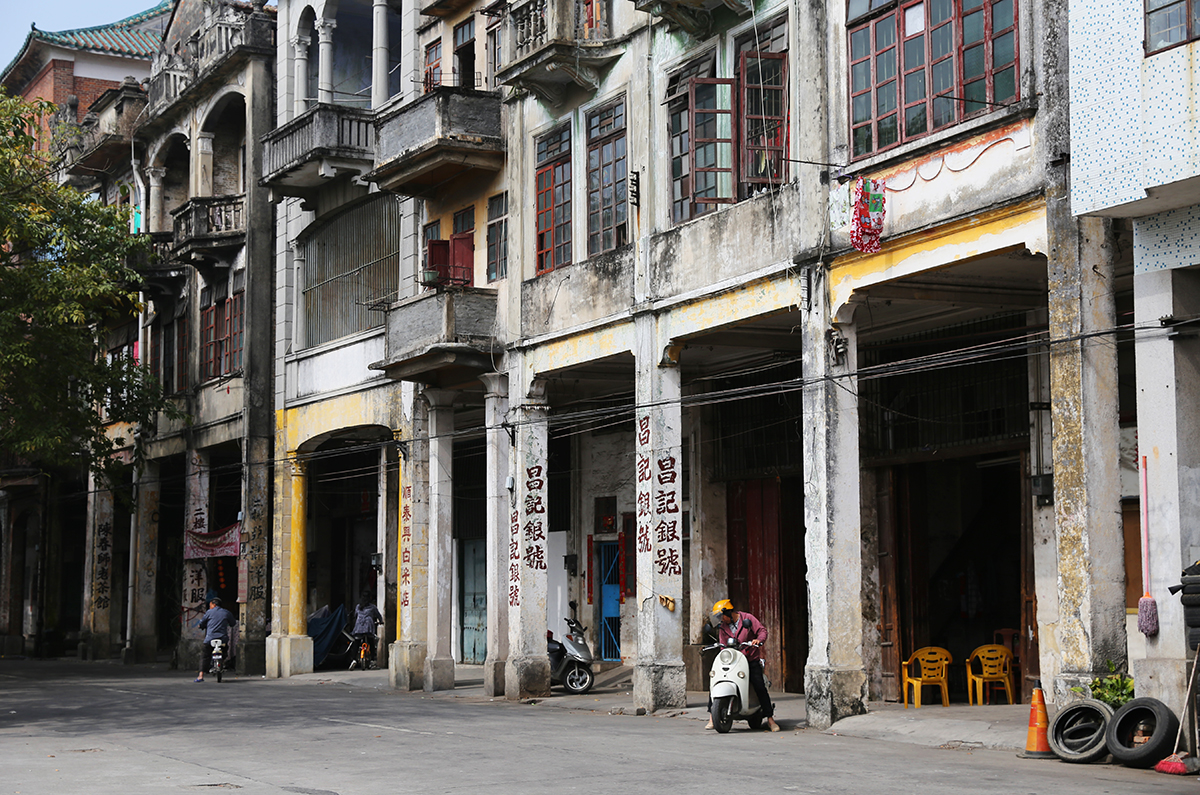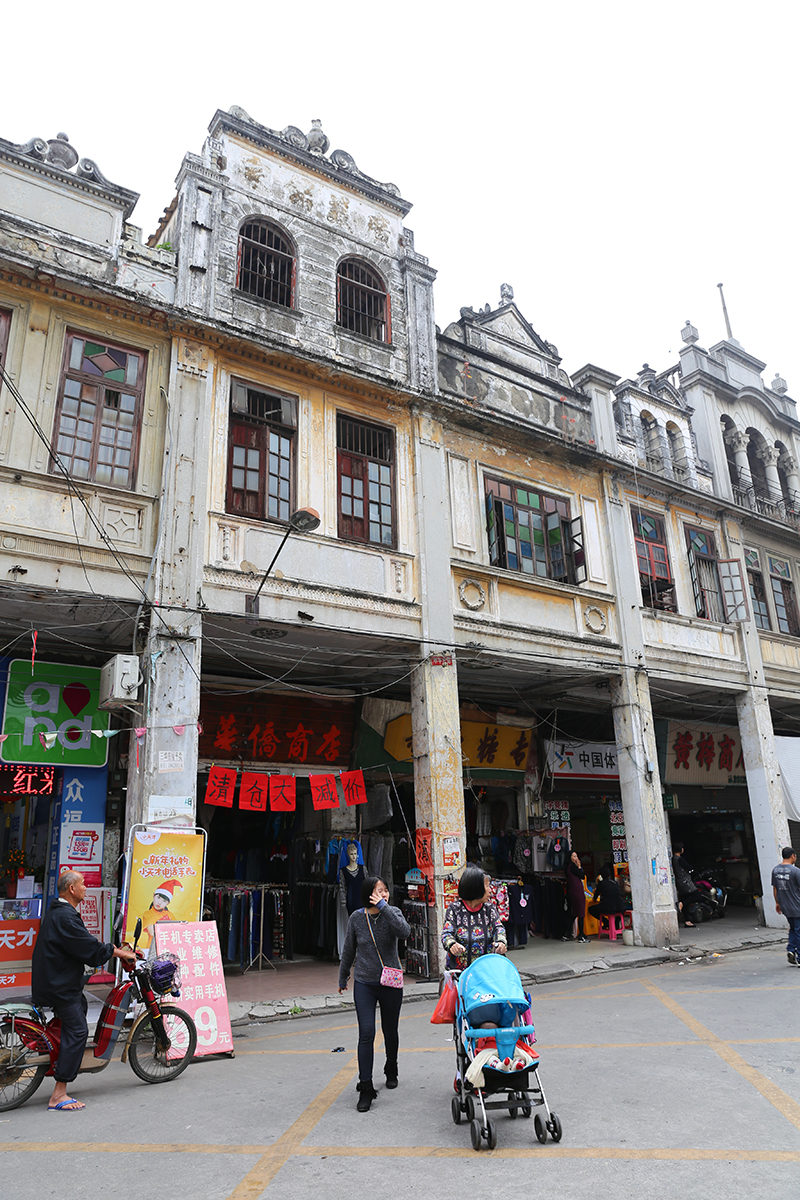
The picturesque town of Chikan represents the historic heart of Kaiping County and rests just 12 kilometres (7 mi) from the city centre of Kaiping itself. The town was originally founded in 1649 and immediately rose to become one of the most important maritime trading hubs in the region due to its proximity to the Tan River, which is part of the well-known Pearl River Delta. From the late 19th century until the early 20th century, this convenient transport link meant that Chikan swiftly ascended to become a major maritime trading hub and centre for emigration, as many locals were prompted to head overseas due to population pressure and poverty.
Thanks to the combined effort of wealthy local merchants and emigrants who made their fortune overseas, Chikan benefited from an influx of investment during the early 20th century and rapidly rose to become one of the largest and most prosperous market towns in southern China. In short, they were the original rags to riches story! By the 1930s, there were nearly 1,000 shops operating in this bustling market town. While the Tan River has since become impassable, the town is now famed for its beautifully preserved Qilou and Diaolou. There are currently over 600 Qilou and around 200 Diaolou in Chikan, the most noteworthy of which are Jinghui Lou, Yinglong Lou, and Nan Lou.
Jinghui Lou is a Qilou that served as the former residence of a man named Zhang Jinghui, who was celebrated for his talents as a medical clinician and rose to fame during the early 20th century. After his death, this Qilou was converted into a museum so that his legacy may live on. More importantly, it will hopefully save him from being confused with the Zhang Jinghui of Liaoning province, who was a ruthless warlord that served the Japanese puppet state of Manchukuo during the World War II. Talk about an unfavourable comparison!

Yinglong Lou or “Greeting the Dragon Tower”, by contrast, is not technically located in Chikan, but can be found in the village of Sanmenli, which is considered part of Chikan township. It is one of the oldest surviving Diaolou in China and was built by the Guan clan during the Ming Dynasty (1368-1644). Unlike the Diaolou that were built during the 20th century, Yinglong Lou is a colossal three-storey rectangular fortress that is almost purely Chinese in style and incorporates few features from Western styles of architecture. It was rebuilt in 1919 with grey bricks and a new roof was added, giving the old fortress a well-deserved makeover!
Finally, Nan Lou is another defensive Diaolou that serves as a testament to the vicious nature of the Second Sino-Japanese War. Seven members of the Situ clan fought off the Japanese invasion of Chikan atop Nan Lou for 7 consecutive days before they were forced to surrender. They were only captured and killed by the Japanese once soldiers fired poisonous gas into the building. A memorial monument was built on the banks of the Tan River in their honour.

In fact, the Situ clan and the Guan clan played an integral role in the historic development of Chikan. Their relationship, however, was not without its controversy! The Situ and the Guan resided on the upper and lower reaches of the Tan River respectively and were notorious for their ferocious rivalry, as they were in constant competition with each other. One of the greatest examples of this rivalry took place in 1923, when the Situ clan spent over 30,000 silver dollars building a public library known as “Situ’s Library”. Not to be outdone, the Guan clan matched this feat by constructing a library of their own, known as “Guan’s Library”, which was opened to the public in 1931. While you shouldn’t judge a book by its cover, evidently these clans were hoping to be judged favorably by their libraries!
With the establishment of the People’s Republic of China in 1949, the influence of these two clans began to wane and, by 1958, both of their libraries had been converted into government offices. They were tragically abandoned after 1968 and many locals were devastated as they watched these two historic buildings slowly fall to ruin. Fortunately, members of the two clans that lived in Kaiping petitioned the local government and campaigned for funding. Thanks to their persistence, the two libraries were renovated and re-opened to the public during the 1980s.
Nowadays, the town is considered so scenic that part of it was converted into “Chikan Studio City” or “Chikan Movie and Television City”, which is a popular set for Chinese filmmakers. Several martial arts epics, including The Grandmaster and Drunken Master II, have at least been partially filmed in Chikan. It is also conveniently located between the magnificent Li Garden and the Diaolou of Majianglong, making it the ideal location to visit some of the most renowned works of ancient architecture in southern China. Unfortunately, however, the town is currently undergoing renovation as part of a government initiative. Now may be your last chance to see it in its original condition before it is transformed into just another tourist attraction!
Explore more about Chikan with us on the unique travel: Explore the Ancient Fortresses of Southeast China